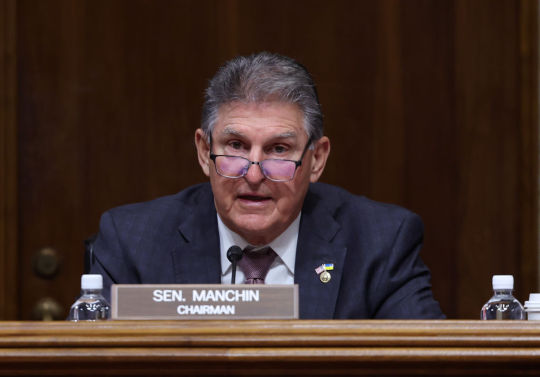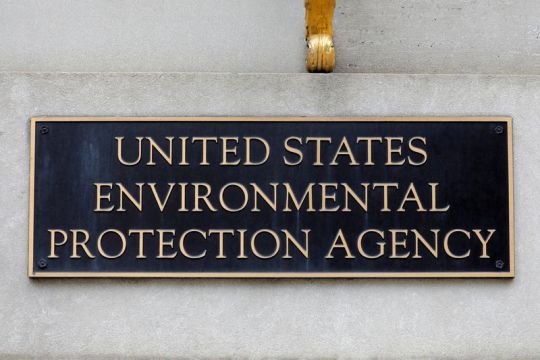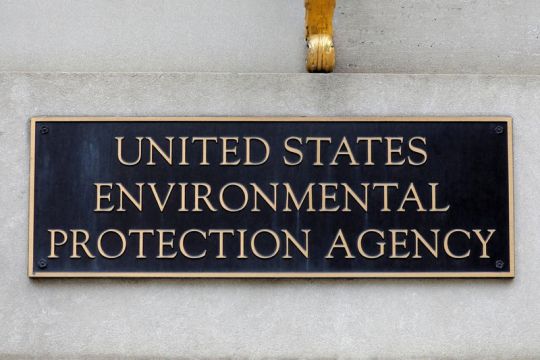#D.C.] : U.S. Environmental Protection Agency
Text
Alternative dis
infectants and oxidants guidance manual
#http://vk.cc/c7jKeU#<p> </p><p> </p><center>ALTERNATIVE DISINFECTANTS AND OXIDANTS GUIDANCE MANUAL >> <strong><u><a href= rel="n#<br> epa guidance manual#<br> epa turbidity standards#<br> tudelft water treatmentgiardia log inactivation#<br> surface water protection#<br> enhanced coagulation#<br> epa water treatment manual filtration#<br>#<br> </p><p> </p><p> </p><p>Alternative Disinfectants and Oxidants Guidance Manual · What people are saying - Write a review · Se#EPA Guidance Manual. Alternative Disinfectants and Oxidants. 7. PEROXONE (OZONE/HYDROGEN. PEROXIDE). Advanced oxidation processes generate#------- DISCLAIMER This manual provides accurate technical data and engineering information on disinfectants and oxidants that are not as w#Additional Physical Format: Online version: Alternative disinfectants and oxidants guidance manual. [Washington#D.C.] : U.S. Environmental Protection Agency#EPA Guidance Manual. Alternative Disinfectants and Oxidants. 1. INTRODUCTION. 1.1 Objective of this Manual. Chlorine is#by far#the most commonly used#</p><br>https://rexatewusov.tumblr.com/post/693331684834361344/stata-manual-survival-analysis#https://rexatewusov.tumblr.com/post/693333716355973120/bruhn-aerospace-structures-pdf#https://rexatewusov.tumblr.com/post/693333218368356352/rel-nofollow-target-blank-read-online#https://rexatewusov.tumblr.com/post/693333716355973120/bruhn-aerospace-structures-pdf.
0 notes
Text
The U.S. Bureau of Land Management will have to reevaluate the wildlife and public health impacts of a major 2022 oil and gas lease sale in Wyoming after a federal judge ruled Friday that the agency had overlooked "what is widely regarded as the most pressing environmental threat facing the world today" when it moved forward with leasing 120,000 of federal land.
U.S. District Judge Christopher Cooper ruled in Washington, D.C. that the BLM did not halt the lease sale even after it acknowledged that oil and gas drilling on the federal lands could result in the same negative environmental and social impacts as the addition of hundreds of thousands of cars to U.S. roads each year.
Moving forward with one of the Biden administration's largest lease sales despite its likely environmental harm, said Cooper, was illegal under the National Environmental Policy Act and other laws.
Representing The Wilderness Society and Friends of the Earth (FOE), environmental legal group Earthjustice sued BLM over its leasing plans' potential impact on the greater sage grouse, an endangered bird species, and other wildlife, as well as groundwater impacts.
The judge found BLM did not complete a sufficiently detailed review of drilling impacts on the greater sage grouse, and relied too heavily on outdated and overly broad analyses of oil and gas drilling in Wyoming.
#us politics#enviromentalism#ecology#bureau of land management#wildlife#public health#wyoming#public lands#oil drilling#oil and gas#oil industry#gas drilling#gas industry
3 notes
·
View notes
Text
The Associated Press: 22 attorneys general oppose 3M settlement over water systems contamination with 'forever chemicals'
TRAVERSE CITY, Mich. (AP) — Twenty-two attorneys general urged a federal court Wednesday to reject a proposed $10.3 billion settlement over contamination of U.S. public drinking water systems with potentially dangerous chemicals, saying it lets manufacturer 3M Co. off too easily.
The deal announced in June doesn’t give individual water suppliers enough time to determine how much money they would get and whether it would cover their costs of removing the compounds known collectively as PFAS, said the officials with 19 states, Washington, D.C., and two territories. In some cases the agreement could shift liability from the company to providers, they said.
“While I appreciate the effort that went into it, the proposed settlement in its current form does not adequately account for the pernicious damage that 3M has done in so many of our communities,” said California Attorney General Rob Bonta, leader of the multistate coalition.
3M spokesman Sean Lynch said the agreement “will benefit U.S.-based public water systems nationwide that provide drinking water to a vast majority of Americans” without further litigation.
“It is not unusual for there to be objections regarding significant settlement agreements,” Lynch said. “We will continue to work cooperatively to address questions about the terms of the resolution.”
The company, based in St. Paul, Minnesota, manufactures per- and polyfluorinated substances — a broad class of chemicals used in nonstick, water- and grease-resistant products such as clothing and cookware, as well as some firefighting foams.
Described as “forever chemicals” because they don’t degrade naturally in the environment, PFAS have been linked to a variety of health problems, including liver and immune-system damage and some cancers.
3M has said it plans to stop making them by the end of 2025.
Some 300 communities have sued 3M and other companies over water pollution from the compounds. A number of states, airports, firefighter training facilities and private well owners also have pending cases.
They have been consolidated in U.S. District Court in Charleston, South Carolina, where the proposed settlement was filed last month.
Although the company put its value at $10.3 billion, an attorney for the water providers said it could reach as high as $12.5 billion, depending on how many detect PFAS during testing the Environmental Protection Agency has ordered over the next three years.
The law firm representing the water providers did not immediately respond Wednesday to messages seeking comment.
EPA in March proposed strict limits on two common types, PFOA and PFOS, and said it wanted to regulate four others.
In addition to California, states urging Judge Richard Gergel to reject the deal included Arizona, Colorado, Connecticut, Hawaii, Maine, Maryland, Massachusetts, Minnesota, New Hampshire, New Jersey, New Mexico, New York, Pennsylvania, Rhode Island, Tennessee, Texas, Vermont and Wisconsin. Also opposed were Washington, D.C., Puerto Rico and the Northern Mariana Islands.
In a court filing, the attorneys general said it would force nearly all public water providers nationwide to participate unless they withdraw individually — even those that haven’t filed suits or tested for PFAS.
“Troublingly, they would have to make their opt-out decisions without knowing how much they would actually receive and, in many cases, before knowing the extent of contamination in their water supplies and the cost of remediating it,” the officials said in a statement.
A provision in the proposed deal would shift liability from 3M to water suppliers that don’t opt out, the statement said. That could enable the company to seek compensation from providers if sued over cancer or other illnesses in PFAS-affected communities, it said.
“As such, the proposed settlement is worth far less than the advertised $10.5 billion to $12.5 billion,” the attorneys general said.
The attorneys general did not take a position on a separate $1.18 billion deal to resolve PFAS complaints against DuPont de Nemours Inc. and spinoffs Chemours Co. and Corteva Inc.
#pfas#pfas settlement#Michigan#Water#Poison water#water#forever chemicals#22 attorneys general oppose 3M settlement over water systems contamination with 'forever chemicals'
7 notes
·
View notes
Link
0 notes
Text
How to Make Your Home a Greener, Healthier Place
https://amzn.to/3U9pvRP
Photo Credit: iStock / Getty Images Plus / Getty Images
SOURCES:
Nancy Simcox, assistant teaching professor and director of continuing education programs, environmental and occupational health sciences, University of Washington, Seattle.
Khanya Brann, spokesperson, U.S. Environmental Protection Agency, Washington, D.C.
EPA: “Improving Your Indoor Environment,” “Learn…
View On WordPress
0 notes
Text
Feds erred in transferring wetlands permitting to FL agency, U.S. judge rules - Florida Phoenix
0 notes
Text
EPA Adds Lounge Lizard to Endangered Species List
WASHINGTON, D.C. The U.S. Environmental Protection Agency yesterday placed the lounge lizard, one of nine species of squamate reptiles native to the United States, on its endangered species list.
“Want to hear my Wayne Newton imitation?”
The notice in the Federal Register cited a sharp drop-off in lounge lizard populations since 2017, when singer Buddy Greco died. “Buddy was the ultimate…

View On WordPress
0 notes
Text
Congresswoman Rashida Tlaib (MI-12) and Alexandria Ocasio-Cortez (NY-14) introduced the Public Banking Act of 2023
WASHINGTON D.C. — Congresswoman Rashida Tlaib (MI-12) and Alexandria Ocasio-Cortez (NY-14) introduced the Public Banking Act of 2023, which facilitates the creation of state and local public banks. The bill establishes a robust federal regulatory framework, grant programs, and financial infrastructure to promote public banks and ensure their success. The bill also mandates minimum standards for public banks relating to environmental justice, tenant protections, labor standards, democratic governance, and consumer data privacy.
“Wall Street-run banks are failing to serve many of my residents who are struggling to make ends meet,” said Congresswoman Tlaib. “It’s long past time to open doors for people who have been systematically shut out. We must provide a better option for those grappling with the costs of simply trying to participate in an economy that has been rigged against them with discriminatory and predatory practices. We need a financial system that is democratically accountable and puts the livelihoods of our residents ahead of private profits.”
Investment decisions shape the future by deciding how today’s resources will meet tomorrow’s needs. Instead of concentrating such decision-making power in private hands, public banks allow investment decisions to be democratically responsive. Instead of serving Wall Street, public banks can offer lower cost debt to city and state governments, fund public infrastructure projects, and encourage entrepreneurship by providing loans to small businesses, at lower interest rates and with lower fees. Unlike our existing financial system that excludes millions of individuals, public and postal banks can ensure everyone has access to basic financial services. Public banks can facilitate the transformative changes our communities desperately need—like affordable housing for all, disaster preparedness, financial inclusion, and a clean energy future.
Over 900 public banks exist worldwide—in countries like Germany, France, and Switzerland—and hold $49 trillion in assets. Here in the United States, the Bank of North Dakota has successfully operated for over a century, contributing millions of dollars annually to the state’s general fund, while partnering with community banks to lower costs for borrowers. During the 2008 financial crisis, the Bank of North Dakota maintained liquidity while the rest of the financial system was in free-fall, helping the state achieve the lowest foreclosure and credit card default rates in the nation.
The Public Banking Act would allow communities across the country to take advantage of these international and domestic precedents by creating a supportive regulatory and institutional framework for the creation of public banks.
It would:
• Provide federal charters for public banks;
• Provide public banks a pathway to membership at the Federal Reserve, allowing public banks additional access to capital and loans;
• Establish a “Public Bank Primary Liquidity Facility” that provides liquidity to public member banks;
• Establish a public banking grant program, to facilitate bank formation, capitalization, and operations, among other purposes; and
• Establish a public banking incubator program for technical assistance and start-up support.
This legislation is cosponsored by: Representatives Ayanna Pressley (MA-07), Barbara Lee (CA-12), Jan Schakowsky (IL-09), and Ilhan Omar (MN-05).
This legislation is endorsed by: Public Banking Institute, Center for Popular Democracy, National Housing Law Project, Detroit Action, Detroit People’s Platform, Wayne Metro Community Action Agency, Friends of the Earth, The Democracy Collaborative, Public Money Action, CA Public Banking Alliance, Public Bank NYC, New Economy Project, Take on Wall Street, People’s Action, Jobs with Justice, Climate and Community Project, Demos, U.S. Federation of Worker Cooperatives, For the Many, Strong Economy for All, NYS Community Equity Agenda, New York Communities for Change, Cooper Square Committee, Genesee Co-op Federal Credit Union, Ethical Humanist Society of Long Island, Multicultural Solidarity Long Island, Long Island Progressive Coalition, Episcopal Diocese of Long Island, WESPAC Foundation, Inc., Center for NYC Neighborhoods.
0 notes
Text
Cities must replace harmful lead pipes within 10 years under new Biden administration plan
Read the full story from the Associated Press.
Most U.S. cities would have to replace lead water pipes within 10 years under strict new rules proposed by the Environmental Protection Agency as the Biden administration moves to reduce lead in drinking water and prevent public health crises like the ones in Flint, Michigan and Washington, D.C.
Millions of people consume drinking water from lead…
View On WordPress
0 notes
Text
The United States has a distinct opportunity to lead the world in rapid phase-down of a major climate pollutant, hydrofluorocarbons (HFCs) that pack an intensive short-term climate punch and are used widely in cooling systems such as air conditioning and refrigeration. In recent years, America has demonstrated leadership in technological development of climate-friendly alternatives and mustered broad political support to accelerate the HFC transition. This included bipartisan backing of 2020 legislation followed by overwhelming U.S. Senate support for a binding global treaty two years later.
The treaty, the Kigali Amendment to the Montreal Protocol on ozone-depleting substances, has been embraced by 150 nations—the latest extension of the most successful global environmental regime of the past half-century. Federal agencies have moved rapidly on implementation, issuing rules designed to achieve an 85% reduction in HFC production and use by the mid-2030s and launching a multi-agency task force to combat smuggling. Everything appeared to be in place for an exceptionally large global climate victory backed by a wide range of industries and governments led by the U.S.
There may, however, be one big catch. HFCs are easy to conceal in small containers, as Europe has experienced amid expanding smuggling activity. A federal court has now ruled that federal agencies lack the authority to combat smuggling by banning disposable containers for transporting coolant chemicals or deploying QR tracking codes to monitor their whereabouts.
Overshadowed by a flurry of recent high-profile Supreme Court rulings is a less salient but notable case from the D.C. Circuit of the U.S. Court of Appeals. It upholds Environmental Protection Agency (EPA) plans to address various HFC blends and allocate allowances through a cap-and-trade program in implementing the American Innovation and Manufacturing Act (AIM). But a majority opinion written by Judge Justin Walker (a Trump appointee) contends that “nowhere does the Act say anything about QR codes or refillable cylinders.” As a result, two linchpins in federal efforts to deter HFC smuggling have been removed, raising significant questions about AIM and Kigali implementation.
The Walker opinion, supported by Judge Karen LeCraft Henderson (a G.H.W. Bush appointee), focuses on the lack of specific statutory reference to the technologies in question. It views HFC regulation exclusively in domestic policy terms, making no reference to Kigali or cross-border smuggling. It defines AIM provisions that EPA “shall ensure” compliance very narrowly, describing its phase-down schedule as “a math equation, not a grant of regulatory power.”
In a partial dissent, Judge Nina Pillard (an Obama appointee), offers a profoundly different view. She characterizes the cannister and code provisions as examples of appropriate agency interpretation of statute. Pillard reviews Kigali and cross-border trade in cooling chemicals as well as EPAs lengthy history in setting container and labeling requirements for such substances as pesticides and biofuels. The majority opinion “will hamstring EPA’s efforts to combat illicit trade in HFCs,” she writes, “making it less likely that the United States accomplishes the HFC reductions Congress mandated.”
This case did not rise to “major question” status, but nonetheless demonstrates the far-reaching capacity of federal courts to block agency interpretation of statutes. The rejected provisions could possibly be restored through separate rules under development, although that would likely face further judicial scrutiny. Congress also could rewrite the AIM Act to specify its views more precisely on container and code use, but legislative revision of existing environmental law has been extremely rare for decades. With a divided Congress, passing a new bill through both the House and the Senate would be challenging.
What appears more likely is that the U.S. may squander an opportunity to lead globally on reducing releases of a major climate contaminant, despite a process that navigated the political gauntlet and yielded a remarkably brief but clear piece of legislation and then broad treaty support. The European Union and other early actors are intensifying their own efforts to deter smuggling, including border seizures, customs agent scanning, and refillable container bans, sustaining early leadership while the U.S. sorts things out.
There are also potential challenges ahead for American manufacturers of HFC alternatives, including expanded competitive risks from illegally produced HFCs. Failure to establish a viable international system will have clear climate consequences in a world in which 10 new air conditioners are purchased globally every second. Full, international Kigali implementation would reduce global temperatures 0.5 degrees Celsius by the end of this century, a cornerstone in climate protection.
This case may foreshadow further judicial micro-management of agency efforts to interpret statutes, including future cases where technology is emerging to achieve significant environmental and climate gains. Like HFCs, methane is also a major short-lived climate pollutant for which the United States appears poised to accelerate mitigation. However, opportunities to take advantage of rapid technological advances to monitor releases precisely from satellites, planes, and drones or to capture gases before release could be undermined if Congress fails to specify in painstaking detail its views on the roles of such technologies in legislation.
The decision also underscores the imperative to restore the U.S. Office of Technology Assessment (OTA). As my Brookings colleague Darrell West has noted, OTAs demise in the 1990s has impaired congressional capacity to understand and address a wide range of technology-related issues. If Congress must spell out in legislation detailed rationales and instructions for federal agencies to deploy single use cannisters and QR codes for cooling sector chemicals, we may be entering a new era whereby the legislative branch will need to markedly expand its technological expertise if future legislation is to survive judicial muster and be effective. OTA restoration could begin to bolster congressional capacity to assume such responsibilities.
1 note
·
View note
Text
Joe Manchin vows to block “radical climate agenda,” rakes in oil and gas industry contributions • OpenSecrets
U.S. Sen. Joe Manchin (D-W.V.), Chairman of the Senate Energy and Natural Resources Committee, during a hearing on May 2, 2023 in Washington, D.C (Photo by Kevin Dietsch/Getty Images)
The Environmental Protection Agency unveiled a new proposal Thursday to cut greenhouse gas emissions from thousands of power plants burning coal or natural gas, two of the top sources of electricity across the…

View On WordPress
0 notes
Text
U.S. orders Norfolk Southern to clean up 'mess' from Ohio train chemical spill
[ad_1]
© Reuters. FILE PHOTO: Signage is seen at the headquarters of the United States Environmental Protection Agency (EPA) in Washington, D.C., U.S., May 10, 2021. REUTERS/Andrew Kelly
By Valerie Volcovici and Brad Brooks
WASHINGTON (Reuters) -The head of the U.S. government’s environmental agency said on Tuesday that rail operator Norfolk Southern Corp (NYSE:) must “pay for cleaning up the…

View On WordPress
0 notes
Text
U.S. orders Norfolk Southern to clean up 'mess' from Ohio train chemical spill
© Reuters. FILE PHOTO: Signage is seen at the headquarters of the United States Environmental Protection Agency (EPA) in Washington, D.C., U.S., May 10, 2021. REUTERS/Andrew Kelly
By Valerie Volcovici and Brad Brooks
WASHINGTON (Reuters) -The head of the U.S. government’s environmental agency said on Tuesday that rail operator Norfolk Southern Corp (NYSE:) must “pay for cleaning up the mess”…

View On WordPress
0 notes
Photo



United States. National Oceanic and Atmospheric Administration, & Office of Public and Constituent Affairs. (1999). Turning to the Sea: America's Ocean Future. Washington, D.C. Full text available via HathiTrust.
“The national dialogue begun in Monterey reflects the diverse, sometimes competing values inherent in our oceans. The seas are not only a source of economic benefit and a major avenue of world trade, but they are also a vital component of our national defense, a natural treasure to be preserved, and a fascinating frontier with secrets yet to be discovered. Our recommendations build on the broad consensus among Conference participants on the vital importance of the oceans to our nation’s future—our economy, our security, our health and well-being—and the challenges we face in ensuring that all the oceans’ many resources are protected and sustained.” (2)
Published in 1999, this book presents a vision for what the United States can do to ensure that marine resources are available to Americans in the 21st century and beyond. Since it was published by the National Oceanic and Atmospheric Administration, which is under the U.S. Department of Commerce, the book outlines concerns and recommendations that span a wide range of categories, including sustainable maritime economics, strengthened and sustainable military presence on the ocean and along the coasts, protections for ocean environments and habitats, and education about oceans and marine resources for various groups. While long, this book outlines concerns and recommendations in a simple bulleted list and provides interesting graphics alongside the text. Also included are links to other government websites, including websites for the Environmental Protection Agency, the U.S. Army Corps of Engineers, the White House, and other NOAA webpages. Unfortunately, the links for some of these sites are outdated, so some of these pages may not be found on the functioning websites.
Since this document contains many recommendations for addressing ongoing concerns for the use of oceanic resources, it would be interesting to research how the U.S. has or has not acted on these recommendations in the years following this document’s publication. It would also be interesting to see if the websites provided in the links are archived either in the Wayback Machine or elsewhere, or if they have been merged onto other websites.
0 notes
Text
Alternative disinfectants and oxidants guidance manual
ALTERNATIVE DISINFECTANTS AND OXIDANTS GUIDANCE MANUAL >> DOWNLOAD LINK
vk.cc/c7jKeU
ALTERNATIVE DISINFECTANTS AND OXIDANTS GUIDANCE MANUAL >> READ ONLINE
bit.do/fSmfG
epa guidance manual
epa water treatment manual filtration
enhanced coagulation
epa turbidity standards
tudelft water treatmentgiardia log inactivation
surface water protection
awwa filter disinfection
------- DISCLAIMER This manual provides accurate technical data and engineering information on disinfectants and oxidants that are not as widely used as Alternative Disinfectants and Oxidants Guidance Manual · What people are saying - Write a review · Selected pages · Contents · Other editions - View all · Common Additional Physical Format: Online version: Alternative disinfectants and oxidants guidance manual. [Washington, D.C.] : U.S. Environmental Protection Agency,EPA Guidance Manual. Alternative Disinfectants and Oxidants. 1. INTRODUCTION. 1.1 Objective of this Manual. Chlorine is, by far, the most commonly used EPA Guidance Manual. Alternative Disinfectants and Oxidants. 7. PEROXONE (OZONE/HYDROGEN. PEROXIDE). Advanced oxidation processes generate highly reactive
https://xuwisutul.tumblr.com/post/693338836077527040/concepts-pdf, https://fofuhefidat.tumblr.com/post/693338912528252929/bc-code-of-professional-conduct-pdf, https://fofuhefidat.tumblr.com/post/693338912528252929/bc-code-of-professional-conduct-pdf, https://xuwisutul.tumblr.com/post/693338836077527040/concepts-pdf, https://fofuhefidat.tumblr.com/post/693338912528252929/bc-code-of-professional-conduct-pdf.
0 notes
Text
EPA Adds Lounge Lizard to Endangered Species List
WASHINGTON, D.C. The U.S. Environmental Protection Agency yesterday placed the lounge lizard, one of nine species of squamate reptiles native to the United States, on its endangered species list.
“Want to hear my Wayne Newton imitation?”
The notice in the Federal Register cited a sharp drop-off in lounge lizard populations since 2017, when singer Buddy Greco died. “Buddy was the ultimate…

View On WordPress
0 notes